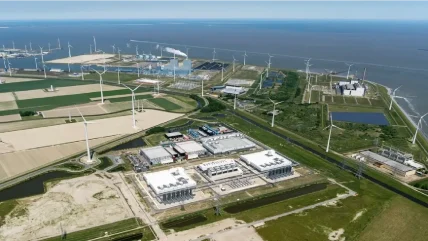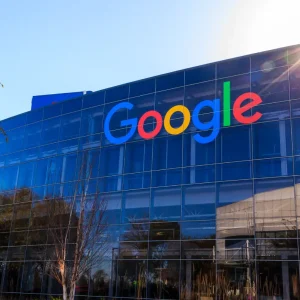
Google’s emissions have risen by 48% in the past five years. In its annual environmental report, the search giant also revealed that its emissions rose by 13% alone in 2023 to 14.3m metric tonnes. Google blamed the rise on its commitment to providing new generative AI services – which has necessitated an expansion of its data centre holdings – and an inability to strike carbon-free energy (CFE) deals with energy providers in the Asia-Pacific region.
“In addition,” said the report, “we often see longer lead times between initial investments and construction of clean energy projects and the resulting GHG [greenhouse gas] reductions from them.”
Google sustainability goals clashing with AI ambitions
Despite these “significant challenges,” the search giant confirmed that it remains committed to its goal of reaching net-zero emissions across its entire value chain and operations by 2030. This will be supported, Google added, by a target to run its data centres on CFE in every grid. Progress on this particular goal appears to be mixed. Only 10 out of Google’s 40 grid regions ran on at least 90% CFE, achieving a global average of 64% CFE across the five year period covered by the report.
It is unclear whether Google’s substantial commitment to providing new generative AI services will worsen these margins. Typically the large language models (LLMs) underpinning generative AI services like ChatGPT are trained and run using myriad graphics processing units (GPUs) housed in large data centres. Google’s own PaLM model, for example, was trained using 6,144 such chips – a process that it has since refined using its in-house Tensor Processing Units (TPUs), which are more tailored to Google’s software requirements.
This is naturally an energy-intensive process. Even cloud facilities housing servers running comparatively mundane storage and processing services consume vast amounts of electricity to keep its racks at an ambient temperature. Increasing demand for AI services on top of that is likely to push that energy requirement even higher. A recent report from the International Energy Agency estimated that such facilities could gobble up 1,000 terawatt hours annually by 2026. In the UK, meanwhile, the National Grid estimates that demand from the sector will increase six-fold by the end of this decade.
Water purification and CFE deal progress
So-called hyperscaler data centre operators typically thread the needle between their increasing energy requirements and their sustainability commitments by powering their facilities using renewable energy. Google highlighted several such projects in its environmental report, including agreements to buy 4GW of clean energy in Belgium, Australia and the US state of Texas, and water stewardship programs that it claims replenished up to 1bn gallons – a 6% increase on the amount it purified in 2022.
Even so, the Columbia Center on Sustainable Investment’s director Lisa Sachs argued that Google could be doing more. “The reality is that we are far behind what we could already be doing now with the technology that we have, with the resources that we have, in terms of advancing the transition” to clean energy, Sachs told the Associated Press.






